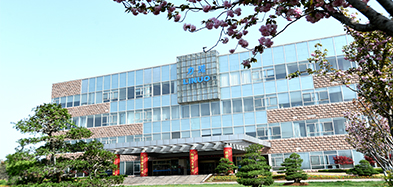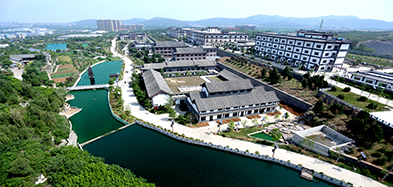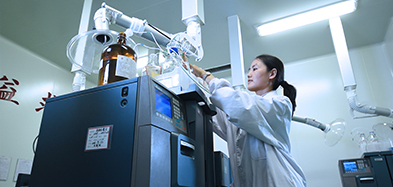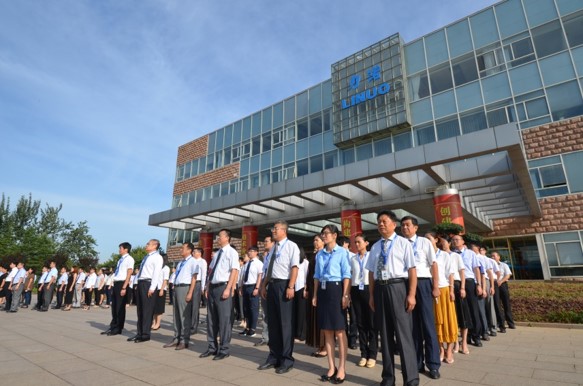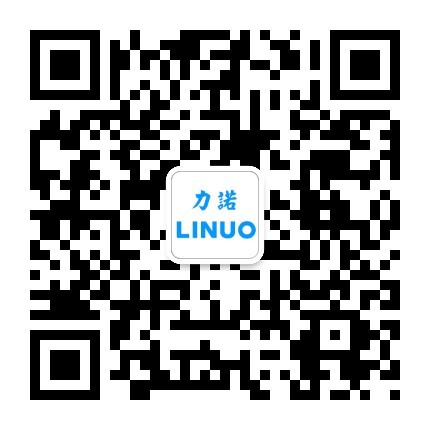Previously known as Hongjitang Ejiao Factory, Hongjitang Ejiao was established in 1909. Yue Jingyu, its founder, was from Tongrentang, a well known traditional Chinese medicine family, in Beijing. (Actually, he was the 12th generation and the prototype of Bai Jingqi, protagonist in the TV series Dazhaimen). Since the factory was established, the core principle of “spread the benevolence and serve the people” has been strongly held to. And according to the motto of Hongjitang “no reduction in raw materials despite the high cost, no spare of the human power despite the complexity in the procedure”, the Five No Purchases was introduced in the process of raw material selection, d.h. raw materials of less than premium quality will not be purchased; raw materials of past years will not be purchased; raw materials with impurities will not be purchased; raw materials, if not the medicinal parts, will not be purchased; raw materials, if not from the best place of origin, will not be purchased.
Hongjitang Ejiao achieved remarkable efficacy through the “nine times purification and extraction” gelatin preparation technique with well selected materials. In 1914, it won the gold medal at the Shandong Products Exhibition. Due to its unique recipe and technique, Hongjitang Ejiao was in great demand on the domestic market and prevalent in the well known TCM stores nationwide.
In 1915, Hongjitang Ejiao was referred to as Natioanl Ejiao when it won a gold medal and a silver medal of first class at the 1915 Panama Pacific International Exposition in San Francisco. It was the first Chinese TCM product ever known to the world and the winning of a gold medal, also worldwide the highest honor Ejiao products or even TCM products ever achieved, was recorded in the Chronicles of Shandong Province. Hongjitang Ejiao became the No.1 among all Ejiao products and was the bestseller in the East and Southeast China and a good export product to Malaysia, Singapore, Indonesia and Japan.
In 1917, Hongjitang set up in Beijing an “Ginseng, Antlers and Ejiao House”.
In 1933, Hongjitang Ejiao was issued the “Product of Supreme Quality” Certificate by the Ministry of Railway Industry. Till now, Hongjitang became the first company which branded, industrialized and internationalized Ejiao products. By 1935, Hongjitang had already had three stores and two factories (Hongjitang TCM Storehouse and Hongjitang Ejiao Factory) and became the leading TCM company in Jinan. Beside Tongrentang in Beijing, Huqingyutang in Hangzhou, Hongjitang was one of the three most well known TCM companies in China.
In 1956, Hongjitang responded actively to the government call of joint state-private ownership of the company.
In 1968, workers and equipment of Hongjitang Ejiao Factory were reassigned to Pingyin and Dong’e TCM Station respectively, all assets were nationalized.
In 1995, Hongjitang was among the first batch of China Time-honored Brands.
In 2002, Hongjitang joined in Linuo Group and started the revival of traditional “nine times purification and extraction” technique of Ejiao production.
In 2006, Hongjitang was among the first China's Time-honored Brands reviewed by the Department of Commerce.
In 2009, Honjitang TCM Culture won the title of intangible cultural heritage. The “nine times purification and extraction” technique was listed in the catalog of intangible cultural heritage.
In 2012, Hongjitang Ejiao was relocated into the Hongjitang TCM Culture Industrial Park, skilled Ejiao technicians gathered together to renew the production of premium quality Ejiao.
In 2013, Jinan Ejiao Products Co., Ltd. attached to Shandong Hongjitang Pharmaceutical Group was established.
In 2014, Hongjitang renewed the production of Nine Day-and-Night Tribute Ejiao as well as other 16 Ejiao products with the name of “Blessing”, “Emolument”, “Longevity”, “Fortune” , “Happiness” and etc.
In 2015, Hongjitang Ejiao was invited to Milan Expo and honored as Expo Company with A 100-Year-Old Brand from Shandong.
Why was Hongjitang Ejiao developed in Jinan?
In 1909, Yue Jingyu, founder of Hongjitang, established Hongji Ejiao Factory. He updated the three day-and-night extraction to nine day-and-night purification and extraction and produced thus 12 new Ejiao products.
Hongjitang Ejiao was awarded altogether a gold medal at the Exhibition of Shandong Province, a gold medal and a silver medal of first class at the the 1915 Panama Pacific International Exposition and a certificate of “Product of Supreme Quality” by the Ministry of Railway Industry.
Hongjitang Ejiao originated in Jinan. Is this just the result of Yue Jingyue’s reckless decision? Or since he established Hongjitang in Jinan, he had to set up the Ejiao factory here? Or are there any advantages in Jinan which attracted Yue’s attention?
That Yue Jingyu set up Hongjitang Ejiao Factory in Jinan is due to the following factors:
1. Geographically Jinan is on the north of Mount Tai, and on its north is the Yellow River, which endows Jinan with advantageous conditions. The cold weather in winter and hot weather in summer are ideal for washing, drying and storing herbal medicine. And in the surrounding areas of Jinan, there grow high-quality medicinal plants, even local specialties, e.g. fructus trichosanthis in Changqing, salvia miltiorrhiza bge in Zhangqiu, acorus calamus in Jiujie, cynanchum bungei dcne.
2. Transportationally Jinan is the traffic hub on Shandong Peninsular, controlling the communication to Beijing, to the South and Northwest China by land and water. At that time, Jinan was the market for primary agricultural products from Shandong, Shanxi and Henan. It was also the distributing center for imported goods from seaport cities like Qingdao. Merchants gathered here and propelled the cultivation of urban commerce.
3.Commercially Jinan opened its port in 1904 and thus provided a good base for the development of national industry and commerce. Quite different from Qingdao and Yantai, which were forced to open their ports, Jinan opened its port with independence in administrative management, municipal construction and jurisdiction. The opening to the outside world and the mercantilism promoted the change in business management. The businesses which had been decentralized and privately operated became more centralized, systematic and professional. This contributed greatly to the prosperity of national industry and commerce.
4. The culture of benevolence has been deeply rooted in Jinan, where Longshan culture and Dawenkou culture once existed. Here, if one tells that a doctor is a doctor with superb skill and a benevolent mind, then it is the best appraisal the doctor can wish for himself. The doctor is not only skilled in medical treatment, but also benevolent to his patients. He has pure love and respect for life and for human being. The traditional Confucian culture which is based on the teachings of Confucius and Mencius originated in Shandong. The Confucian conception of benevolence has long been acknowledged by the people of Jinan. Though Hongjitang was founded by Yue Jingyu, who was not born and grew up in Jinan, its principle of “spread the benevolence and serve the people” was accepted and identified by the local people. All these are attributed to the inheritance of the same culture.
Of course, there are other factors which contributed to Yue’s establishment of Hongjitang Ejiao Factory in Ji’nan.
The unique hydrology in Jinan: there is a water system consisting of Daming Lake, Baotu Spring, etc in Jinan. This kind of water is due to its trace element contents heavier than other water, which plays an important role in the Ejiao production.
The prosperity of TCM market in Jinan: the scenic spots Yao Hill, Que Hill, the Temple of the King of Medicine as well as the belief in the King of Medicine are all contributing factors. The belief in the King of Medicine has a long history in Jinan. When there was a temple fair, tens of thousands of people would visit the Temple of the King of Medicine around the Baotuquan Street. There they burned incenses and made wishes for better health.
In the early years of the Qing dynasty came into being Yaowang TCM Trade Fair, also called Baotu Spring TCM Trade Fair which lasted usually 10 to 15 days. And in the mid of the Qing dynasty, it became one of the three TCM Trade Fairs in North China. And at the end of the Qing dynasty, TCM products beame one of the most important trade goods in Jinan.
The establishment of numerous Ejiao factories, big and small, called for a leader.
It was the commercial development, especially the well developed TCM market, TCM culture, the deep-rooted belief in the King of Medicine, the rich tradition of TCM market, the economic and political environment after Jinan became a commercial hub and the unique hydrology that contributed to the birth of Hongjitang Ejiao.
How is Hongjitang Ejiao produced?
In the past decade, the tonic efficacy of Ejiao has been acknowledged and accepted by more and more people. At the same time, the supply of donkey hides has fallen short of demand, which led to the price increase of Ejiao. On the market, there are various Ejiao brands, but how many of them are genuine Ejiao?
As the whole Ejiao industry experienced the confidence crisis, Hongjitang decided to identify every piece of donkey hide with DNA test. To the amazement of all, a genuine donkey hide will also be turned down if it failed in the DNA test.
The innate conscientiousness shown in Hongjitang Ejiao originates from Yue Jingyu, heir to Tongrentang in Beijing.
Yue Jingyu is the prototype of Bai Jingqi, the protagonist in the TV series Dazhaimen. In 1909, he founded Hongji Ejiao Factory, the predecessor of today’s Jinan Ejiao Products Co., Ltd. under Shandong Hongjitang Pharmaceutical Group, at No. 56, Dongliushui Street, outside Jinan west gate.
Before that, Ejiao was produced with the three day-and-night extraction technique. Yue Jingyu developed a new nine day-and-night extraction and distillation technique, which had 66 more processing steps than the former technique and took therefore 6 more days and nights. Hongjitang Ejiao was then sold in Shanghai, Guangzhou, Zhejiang, Fujian and Anhui etc, and exported to Malaysia, Singapore, Indonesia and Japan in the following years, and dominated almost the whole Ejiao market.
More remarkable is that Hongjitang Ejiao was referred to as National Ejiao, when it won a gold medal at the 1915 Panama Pacific International Exposition in San Francisco. It was the first Chinese TCM product ever known to the world and the winner of a gold medal, which is also the highest honor Ejiao products or even TCM products ever achieved worldwide till today. Thus, Hongjitang Ejiao became No. 1 among all Ejiao products.
In 1968, Hongjitang Pharmaceutical Group (Jinan People’s Pharmaceutical Facotry at that time) was instructed to allocate its Ejiao workshop to Dong’e and Pingyin, along with the gelatinizing equipment and some skilled workers. After that, Hongjitang Ejiao was unheard of for almost half a century.
In 2002, Hongjitang Pharmaceutical Group and Linuo Group completed the strategic integration and started the revitalization plan for National Ejiao. After 10 years of research and development and over thousand times of experiments, the traditional processing technique was rehabilitated on 28 September, 2012 and the production line started its operation.
Today the “nine times purification and extraction” technique has been listed in the catalog of national intangible cultural heritage. As the originator of premium Ejiao, it is Hongjitang’s mission to make Ejiao known to and accepted by more and more people around the world.
Previously known as Hongjitang Ejiao Factory, Hongjitang Ejiao was established in 1909. Mr Yue Jingyu, its founder, was from Tong Ren Tang. will not be purchased; raw materials, if not from the best place of origin, will not be purchased.
In the company presentation, we have described the early success of Hongjitang Ejiao in winning an international medal as well as local honours. Let us turn to the story of Hongjitang Ejiao after the founding of the PRC.
In 1956, Hongjitang was partially nationalised. In 1968, the business and assets of Hongjitang Ejiao Factory were reassigned to Pingyin and Dong’e’s TCM Station, and all assets were nationalized.
In 1995, Hongjitang was among the first group of companies recognised as a Chinese Historical Brand.
In 2002, Hongjitang joined the Linuo Group. The technique for“ninefold purification and extraction” was then revived, and in 2009 Hongjitang’s TCM Culture including this purification technique were listed in the national Intangible Cultural Heritage catalogue. .
In 2012 Hongjitang Ejiao moved into the Hongjitang TCM Culture Industrial Park, where skilled Ejiao technicians now together work to renew the production of premium quality Ejiao. In 2013 Jinan Ejiao Products Co., Ltd. attached to Shandong Hongjitang Pharmaceutical Group, was established. In 2014 Hongjitang renewed production of Nine Day-and-Night Imperial Tribute Ejiao, the ancient art of Ejiao production or the Emperor’s court. 16 other Ejiao products with the names of “Blessing”, “Emolument”, “Longevity”, “Fortune” , “Happiness” , etc, also commenced production.
In 2015, Hongjitang Ejiao was invited to the Milan World Expo and honoured as a Shandong Company with a Century-Old Brand.
In recent years, more and more people acknowledge and accept the tonic efficacy of Ejiao. At the same time, the supply of donkey hides has fallen short of demand, leading prices increases of the final Ejiao product. One has to wonder how many Ejiao products on the market are genuine? The whole Ejiao industry experienced a crisis of confidence, so Hongjitang decided to identify and verify every piece of donkey hide by DNA testing. Hongjitang will reject any donkey hide, genuine or not, should it fail the DNA test.
Why was Hongjitang Ejiao developed in Jinan?
Below are the advantages of Jinan that led Mr Yue Jingyu to set up Hongjitang Ejiao Factory in this city:
1. Geographically Jinan is north of Mount Tai, and south of the Yellow River, which endows Jinan with advantageous conditions. The cold weather in winter and hot weather in summer are ideal for washing, drying and storing herbal medicine. And in the surrounding areas of Jinan, there grow high-quality medicinal plants, including some local specialties, likefructus trichosanthis in Changqing, salvia miltiorrhiza in Zhangqiu, acorus calamus in Jiujie, cynanchum bungei, etc.
2. Jinan is the traffic hub of the Shandong Peninsula, controlling communication to Beijing, to the South and Northwest China by land and water. At that time, Jinan was the main market for agricultural products in Shandong, Shanxi and Henan. It was also the distribution centre for imported goods from seaport cities like Qingdao. Merchants gathered here and urban commerce flourished.
3. Jinan opened its port in 1904 and thus provided a good base for the development of manufacturing and commerce. Whereas Qingdao and Yantai were forced to open their ports under colonial administration, Jinan opened its port with independence in administrative management, municipal construction and jurisdiction. The opening to the outside world and mercantilism promoted a change in business management - becoming more centralized, systematic and professional.
4. Jinan as the capital of the province which is the home of ancient sages like Confucius, where their teachings were highly respected, valued benevolence in business. Here, if one tells a doctor that he has superb skills and a benevolent attitude, it is the best appraisal a doctor could wish for. Although Hongjitang was not founded by a local, Mr Yue Jingyu’s business philosophy of “spreading benevolence and serving the people” was accepted and appreciated by local people.
5. Unique hydrology in Jinan: the local water system consists of Daming Lake, Baotu Spring and other springs. This kind of water has trace element contents heavier than water, which plays an important role in Ejiao production.
6. Jinan is a major TCM market: the scenic spots Yao Hill, Que Hill, the Temple of the King of Medicine all contribute to the sanctity of medicine in this city. The King of Medicine cult has a long history in Jinan. When there was a temple fair, tens of thousands of people would visit the Temple of the King of Medicine near Baotuquan Street. There they burned incense and prayed for better health.
Yaowang TCM Trade Fair started in the early years of the Qing Dynasty. It was also known as the Baotu Spring TCM Trade Fair, and lasted usually 10 to 15 days. In the mid-Qing Dynasty, it became one of three well-known TCM Trade Fairs in North China. By the end of the Qing dynasty, TCM products were one of the most important trade goods in Jinan.
And so it was that the establishment of numerous Ejiao factories, big and small, in Shandong called for a leader. Mr Yue Jingyu understood this opportunity and therefore established Hongjitang Ejiao.
Hongjitang: Producing Ejiao with professional devotion
At Hongjitang you can view all kinds of Ejiao products produced in the traditional way. Every piece of Ejiao is pitch-black and if you hold it against the light, it is amber red. That the Ejiao looks as red as amber and as black as pitch are markers of high-quality Ejiao.
Every piece of Ejiao goes through the traditional processing steps like immersing - washing - gelatinating - filtering - concentrating - gelling - cutting - drying - cleaning - packaging. Donkey hides are boiled and refined over gentle heat in an open pot. Altogether there are 99 processing steps, which can be divided into 300 sub-steps.
Hongjitang has an old saying: “No one witnesses the processing of herbal medicine; yet the Heavens witness our devotion to work”. In Hongjitang we also say: “No reduction in raw materials despite their high cost, no saving in manpower despite the complexity of production. This demonstrates the importance of quality in the development of our company.
Given intense competition in the market, Hongjitang Ejiao believes in the principle that the production of Ejiao necessitates the best raw materials. When competitors use low-quality materials to make more profit, Hongjitang spends more money on quality control. As global manufacturers, Chinese enterprises should focus on product quality and service.
Only the water from the Ji River and the hides of black donkey from Dezhou are used, in accordance with the precepts of Chen Xiuyuan, a famous TCM doctor in the Qing dynasty. According to Chinese TCM theory, “Black goes to the kidneys, which coordinate the elements of water and fire”.
Ejiao, ginseng and antlers are three precious tonics of TCM with a recorded history of over 3000 years. The tonic efficacy of Ejiao has been acknowledged for a millennium. In Compendium of Materia Medica by Li Shizhen and other Materia Medica, Ejiao is categorized among the top materia medica. According to Chinese TCM theories, the Ejiao from Dong’e can invigorate vital energy and nourish blood. Moreover, it can also boost Yin and increase moisture. Shennong Herbal Classic, the first Chinese materia medica, states that Ejiao can be beneficial to vital energy; it makes one more flexible if taken regularly.
Ejiao has a long history, being originally prepared mainly as tribute to the nobility, and thus produced in small quantities in individual workshops. It was Mr Yue Jingyu who first came up with standardized, large-scale production in the Hongjitang Ejiao Factory in 1909.
At that time, all Ejiao produced smelled of donkey hide. Mr Yue Jingyu worked with his employees and tried many times before they finally developed a new refining process, the ninefold purification and extraction method over nine days and nights. This method effectively removes the odor of donkey hide and at the same time enhances the efficacy of Ejiao. This marked the resolution of a very important technical problem in the development of Ejiao over the past 2,000 years.
At the 1915 Panama Pacific International Exposition, Hongjitang Ejiao, produced with this unique gelatin preparation technique, won a gold medal and, as the only medicinal product from China at the exhibition, attracted worldwide attention.
When compared with Ejiao of other brands on the market, Hongjitang Ejiao is homogeneous and thick. ‘Hongjitang Ejiao is as black as pitch, as red as amber, hard but brittle, and the fracture surface is smooth and shiny. All these are characteristics of premium Ejiao. In 2002 when Hongjitang joined Linuo Group, managers of Hongjitang were dispatched to different Ejiao production bases all over the country, meeting former technicians and workers and inviting them to rejoin Hongjitang. After a decade of hard work, China’s only manual Ejiao production line based on traditional techniques was set up in 2012.
Hongjitang: Producing Ejiao with professional devotion
In the storehouse of Hongjitang, there exhibit all kinds of Ejiao products after the renewal of traditional method of production. Every piece of Ejiao is pitch-black and if you take it against the light, it is amber red. That the Ejiao looks as red as amber and as black as pitch are markers of high-quality Ejiao.
The production of Hongjitang Ejiao follows the traditional method of preparation. Every piece of Ejiao goes through the processing steps like immersing - washing - gelatinating - filtering - concentrating - gelling - cutting - drying - cleaning - packaging. Donkey hides will be boiled and refined over gentle heat in an open pot. Altogether there are 99 processing steps which can be divided into 300 sub-steps.
A most well-known work principle in Hongjitang is “the processing of herbal medicine is seen by nobody; however, the devotion to the work will be known by the Heavens”. And another motto of Hongjitang reads: “no reduction in raw materials despite the high cost, no spare of the human power despite the complexity in the procedure”. It explicitly shows the importance of quality in the development of the company.
Seeing the competition of Ejiao products on the market, Hongjitang holds fast to the principle that Hongjitang can only become a long-standing enterprise if it uses good and authentic materials in the production of Ejiao. When the competitors use low-quality materials to make more profit, Hongjitang are spending more money on quality control. This can remind us of toilet lids and electric rice cookers made in Japan. These products are sought after by Chinese when they visit Japan. The time when low-priced products of comparably low quality were in trend is gone. As world manufacturers, Chinese enterprises shall pay more attention to the product quality and service, so as to fulfill the updated requirements of Chinese customers with more “quality products of China”.
From this perspective, the professional devotion through the “nine times purification and extraction” technique and the conscientiousness reflected in the DNA test of every piece of donkey hide are two instances of good practice Chinese manufacturers shall follow. Good practice can be not only beneficial to the customers, but also decisive to the development of an enterprise.
Hongjitang Ejiao: the development of Ejiao shows the professional devotion
A century ago, Hongjitang Ejiao was first produced in Ji’nan. It was referred to as “National Ejiao” due to its unparalleled quality and advanced processing technique. 100 years later, Hongjitang Ejiao, which still follows the traditional manual processing technique will again become a health trend.
The spirit holds on after a century’s development
Ejiao, ginseng and antler are three precious tonic TCM with a recorded history of over 3000 years. The tonic efficacy of Ejiao has been acknowledged since a millennium. In ancient times, Ejiao was a tribute to the royal family. In Compendium of Materia Medica by Li Shizhen and other Materia Medica, Ejiao is categorized among the top meteria medica. According to Chinese TCM theories, the Ejiao from Dong’e can invigorate the vital energy and nourish the blood. Moreover, it can also nourish Yin and moisten dryness. Shengnong Herbal Classic, the first Chinese materia medica, states that Ejiao can be beneficial for the vital energy; it makes one nimbler if it is taken regularly.
Ejiao has a long history, however, it was only prepared as tribute for the nobles in ancient times. Due to the productivity level, it was first produced in individual workshops. The standardized, large-scale production did not appear until Yue Jingyu, the founder of Hongjitang, set up Hongjitang Ejiao Factory in 1909.
At that time, all Ejiao produced was full of the stench of donkey hide. Yue Jingyu worked with his employees together and tried many times before they finally developed a new refining method, d.h. the nine times purification and extraction over nine days and nights. This method can effectively remove the stench of donkey hide and at the same time enhance the efficacy of Ejiao. A very important technical problem in the development of Ejiao over the past 2000 years was thus solved.
At the 1915 Panama Pacific International Exposition, Hongjitang Ejiao which was produced with the unique gelatin preparation technique won a gold medal and, as the only one medicinal product from China, attached worldwide attention.
producing high-quality Ejiao with professional devotion
When compared with Ejiao of other brands on the market, Hongjitang Ejiao is more homogeneous and thicker. If it is held against the light, it looks red, half transparent and crystalline.
“Hongjitang Ejiao is as black as pitch, as red as amber, hard but brittle, and the fracture surface is smooth and shiny. All these are characteristics of premium Ejiao. In 2002, Hongjitang and Linuo Group completed strategic integration. Sponsored by Linuo Group, managers of Hongjitang visited different Ejiao production bases all over the country, met former technicians and workers and invited them to rejoin Hongjitang. After 10 years hard working, the only manual Ejiao production line based on the traditional technique was set up in 2012. Beside the “nine times purification and extraction” preparation technique which has been listed in the catalog of intangible cultural heritage, the value of Ejiao lies also in the selection of raw materials. Only the water from the Ji river and the hide of black donkey from Dezhou are used. Chen Xiuyuan, a famous TCM doctor in the Qing dynasty, said once that “Ejiao must be made from black donkey hide and also important is the use of water from Ji river. According to Chinese TCM theories, black goes to kidney which coordinates the elements of water and fire”. Only with high-quality raw materials can good Ejiao be produced. The revival and modification of traditional technique of “nine times purification and extraction” guarantee the premium quality of Hongjitang Ejiao.
“The processing of herbal medicine is seen by nobody, however, the devotion to the work will be known by the Heavens”. All employees of Hongjitang have been following this ancient principle during the past century and preparing Ejiao with unchanged commitment. Being a century-old enterprise, Hongjitang will continue to produce high-quality Ejiao with well selected medicinal materials.







